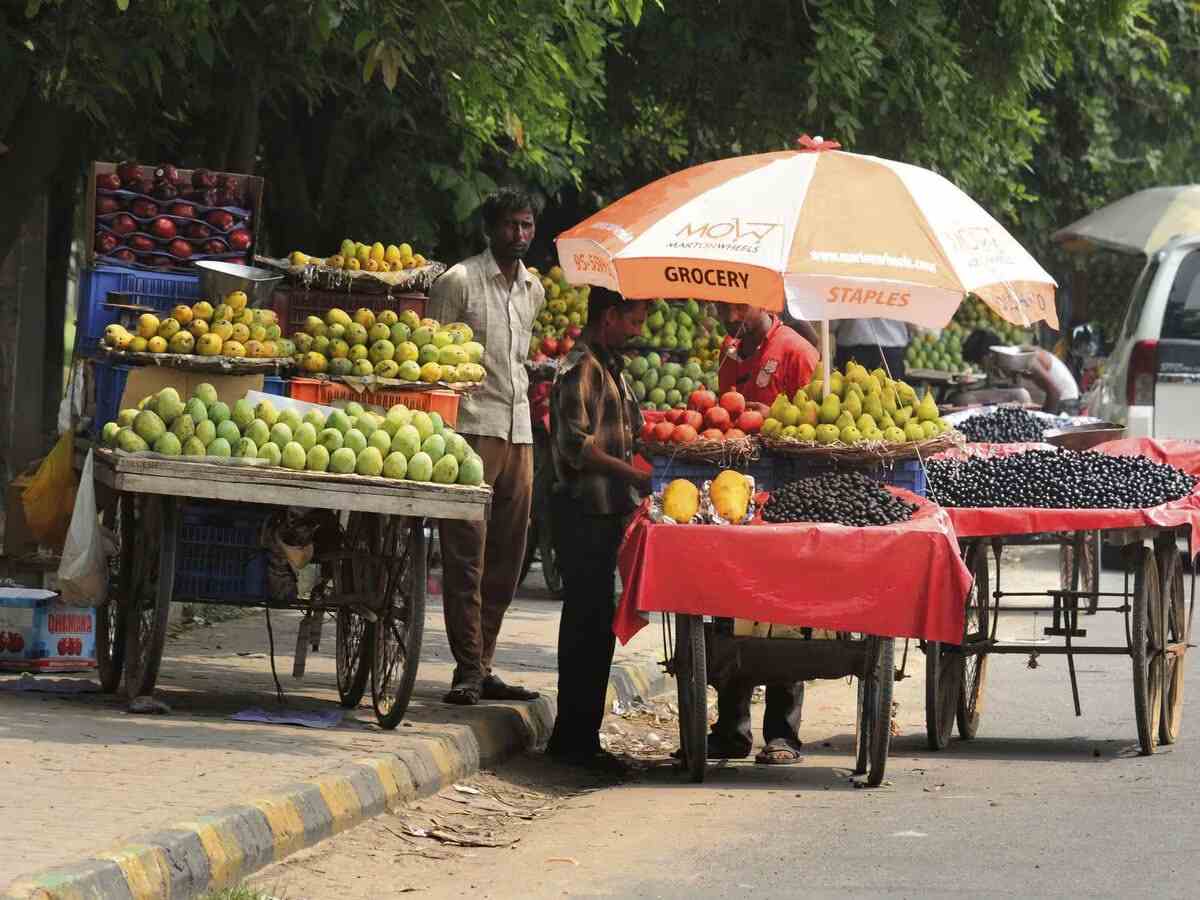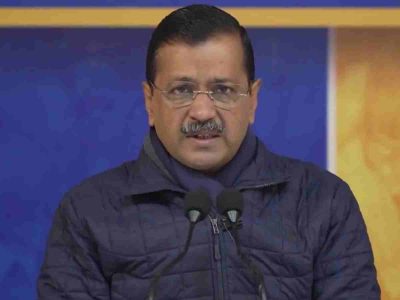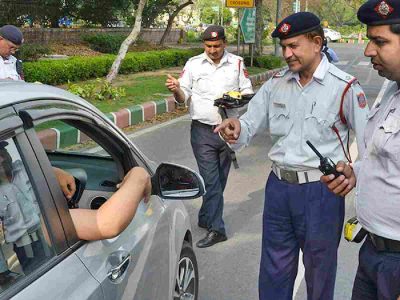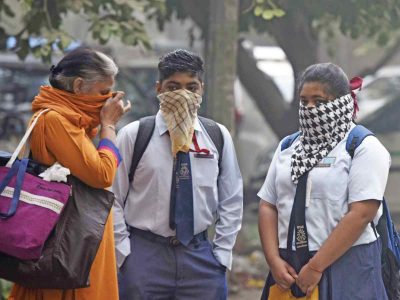As Delhi endures a punishing summer, with temperatures consistently soaring above 40 degrees Celsius, thousands of the city’s street vendors are left grappling with the relentless heat. With no designated areas to shield them, they remain exposed to extreme conditions, highlighting the harsh realities of survival, resilience, and the growing human cost of climate change in the capital.
In the narrow, bustling lanes of Delhi’s Connaught Place, Ramesh Kumar, a 48-year-old fruit seller, adjusts a tattered blue tarpaulin above his cart. It barely shields him from the searing sun. The mercury has touched 42°C, and the heat hangs in the air like a thick, suffocating blanket.
“I have been selling fruits on this street for the past 18 years,” Ramesh told Patriot. “I have seen all kinds of summers, but this year is different. It feels like standing inside an oven from morning to night.”
He added, “Sometimes, it gets so hot that the fruits start rotting by noon. But if I don’t stay out here, who will feed my family?”
Every day, Ramesh pushes his cart from his one-room home in East Delhi, setting up shop by 9 AM. By noon, the metal parts of his cart are too hot to touch. Water trickles endlessly down his face, but leaving early is not an option.
“Even if I sell half of what I used to, I have to be here,” he said. “There are no paid leaves for people like us.”
‘It’s the emptiness that breaks your spirit’
A few lanes away, in Sarojini Nagar, Meena Devi, a 42-year-old clothes vendor, arranges colourful tops and scarves on makeshift hangers, fanning herself with a plastic sheet.
“People are not coming out unless it’s very necessary,” she said with a sigh. “On some days, I don’t even make Rs 500. Earlier, weekends were packed, but now I sit here for hours without a single customer.”
The few customers who do brave the streets hurry past without stopping, shielding their faces with scarves or umbrellas. For vendors like Meena, it means long hours with little reward — and growing anxiety about how to pay rent, school fees, and electricity bills.
Also read: Delhi: MCD to hold ordinary monthly meeting on May 21
The cost of staying cool
At Red Fort, Sayeed Ali, who sells bottled cold drinks from an old icebox, has his own way of coping.
“I saved up money to buy a plastic sheet for some shade,” he said, sitting behind his small wooden stall. “But when the hot wind blows, even the sheet is useless. It feels like the air is burning your skin.”
Sayeed added that he drinks nearly 10–12 bottles of water himself every day just to stay on his feet.
For many like him, the cost of keeping cool eats into whatever little earnings they make. Bags of ice that once lasted a full day now melt away by lunchtime, forcing vendors to restock or lose customers.
The toll is not just financial — it is physical too. Across Delhi’s streets, vendors complain of dizziness, dehydration, nosebleeds, and heat rashes. Hospitals have reported an increase in heatstroke cases over the past week.
No choice but to endure
In Kashmere Gate, flower-seller Kavita Sharma arranges wilted marigold garlands around her neck.
“There is no paid leave for us,” she said quietly. “Every day I stay at home is a day my children sleep hungry. We don’t have savings. We live hand to mouth. So even if the roads are empty, even if the sun is cruel, we have to sit here, hoping someone will stop by and buy something.”
Nearby, little Sahil, Kavita’s 8-year-old son, sits listlessly beside her, sipping warm water from a reused plastic bottle.
“There are no summer vacations for poor children,” Kavita said, her voice breaking. “He gets sick often, but where should I leave him? It’s safer to keep him close.”
In Karol Bagh, fruit vendor Prem Nath shares another cruel consequence of the heat: waste.
“Yesterday I threw away half my bananas,” he said, showing blackened, mushy fruit. “They blackened and melted under the heat before I could sell them. It’s a double loss: no sales and loss of investment.”
Heat is not their only enemy
While vendors grapple with survival, another battle brews — with municipal authorities. Encroachment drives, fines, and eviction notices add to their daily woes.
“If we sit at home, will the government come and feed us?” asks Rafiq, a belts and wallets vendor in Paharganj. “We are invisible to them. No one cares about the poor sweating and fainting on the streets.”
Back in Janpath, Anita Yadav, who sells samosas and lemon water from a cart, echoes the call for basic help.
“We are not asking for charity,” she said. “But at least give us basic facilities. Water is life. Shade is survival. If the government can put up tents for VIP events, why can’t they think about the workers who keep this city running?”
Some vendors have taken matters into their own hands. In Old Delhi, groups have pooled money to buy cheap tarpaulins and used plastic water tanks. A few even installed second-hand mist fans outside popular markets.
“We take care of each other,” said Imran Khan, a shopkeeper. “Otherwise, who will?”
“We are used to struggle,” Ramesh said, squinting at the blazing afternoon sun. “This heat burns our skin, but not our spirit. We don’t ask for luxury — just a little mercy from the heat and a little respect from the people.”
As he spoke, a gust of hot wind lifted the edge of his tarp, sending a few fruits rolling off the cart. He sighed, adjusted the cover, and started again — another day, another battle under Delhi’s brutal summer sky.
Delhi government’s action plan
As Delhi faces harsher and longer summers, the city government is developing a detailed long-term strategy to lessen the effects of extreme heat on its residents.
Chief Minister Rekha Gupta has instructed all government departments, including the municipal corporation and the Delhi Development Authority (DDA), to work together on the new initiative. According to officials, the plan will focus on introducing systemic reforms in urban planning and infrastructure to build lasting resilience.
The government is set to focus on retrofitting existing structures, particularly in regions most vulnerable to extreme heat. New building bye-laws making such upgrades mandatory are expected to be introduced shortly.
To safeguard the urban poor, the Delhi government also aims to map areas for shelters and shaded spaces throughout the city, especially within slum settlements and densely populated neighbourhoods.
“Creating safe spaces where people can seek refuge from the heat is essential,” an official said.
Also read: Delhi: Draft Dengue Action Plan proposes higher penalties
Health experts warn of rising risks
Health experts have sounded the alarm over the serious health risks facing Delhi’s street vendors as the city battles extreme summer heat.
Dr Shaarang Sachdev, Senior Consultant and Head of the Emergency Department at Aakash Healthcare, warned that prolonged exposure to high temperatures can have dangerous consequences.
“Extended hours in the sun can cause heat-related illnesses like heat exhaustion, heat stroke — which is a medical emergency — heat cramps, and even fainting,” Dr Sachdev said.
He further explained that severe dehydration due to continuous sweating can impair both physical and mental functioning. Constant exposure to ultraviolet (UV) rays can also lead to extreme fatigue, while worsening air pollution during the summer months exacerbates respiratory conditions such as asthma and bronchitis.
Street vendors who handle food are also at heightened risk for gastrointestinal infections due to food spoilage caused by the heat, Dr Sachdev cautioned.
“The cardiovascular system also comes under severe strain during high temperatures, which can precipitate heart attacks in vulnerable individuals,” he added.
Beyond physical health threats, Dr Sachdev emphasised the often-overlooked psychological impact, warning that economic stress combined with harsh working conditions can lead to increased cases of irritability, anxiety, and depression among vendors.
IMD forecast offers temporary relief
The Indian Meteorological Department (IMD) has forecast that the national capital will witness partly cloudy skies with no heat wave conditions till May 2, 2025.
The IMD has also predicted strong surface winds for the same period.





